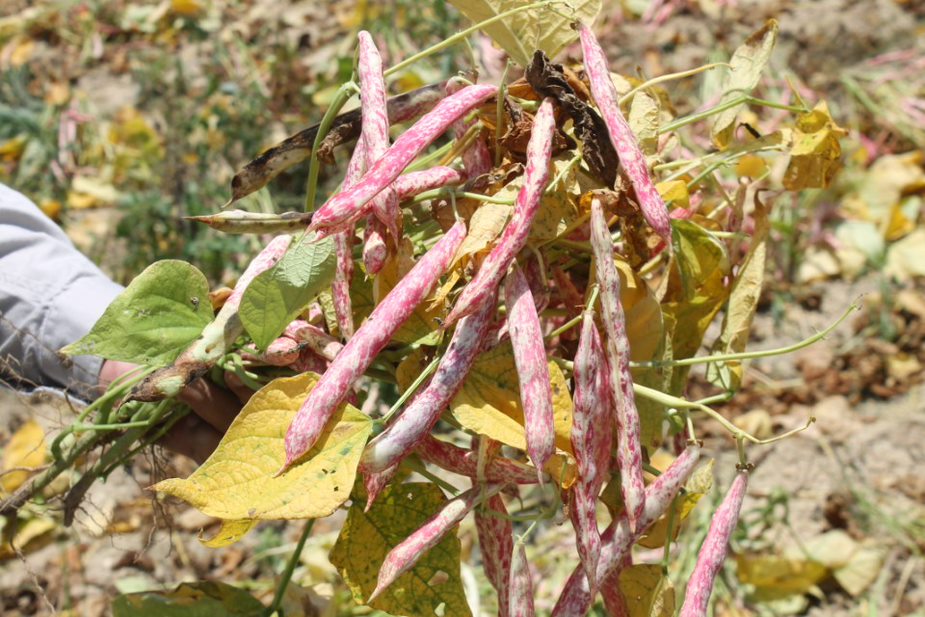Technical efficiency of cowpea bean (Vigna unguiculata L. Walp) in the Caribbean Region of Colombia
DOI:
https://doi.org/10.15517/am.v33i2.47673Keywords:
production, factors, inputs, returns, rationality, productivityAbstract
Introduction. Within the production systems of the peasant economy in the Caribbean Region, the cowpea (Vigna unguiculata L. Walp) is important given its nutritional quality. There are few studies that inquire about the allocation of production factors by the producer. Objective. To analyze and determine the efficiency of cowpea production in the Caribbean producing regions of Colombia. Materials and methods. Between 2018 and 2020, the study was conducted using the information applied to 31 productive units in the producing regions of the departments of Cordoba, La Guajira, and Cesar in a randomly selected sample using the simple random sampling method. A structured survey was applied to the sample on data on inputs used in production such as labor, seed, fertilizer. Descriptive statistics, dispersion measures, correlation, and regression analysis were calculated, and for the purpose of evaluating the efficiency and contribution of each factor to production, a Cobb-Douglas econometric model was formulated. Results. Information was generated on the contribution of each factor makes to production, where seed and fertilizer stand out as those with the greatest contribution. Conclusions. The farmer was efficient because there was a direct relationship between the increase in inputs and the quantities produced, in addition, the technology gap is narrow of the order of 8 %, with yields on an increasing scale due to the direct relationship between the increase in inputs and the increase in product.
Downloads
References
Adeola, S. S., Folorunso, T., Gama, N., Amodu, Y., & Owolabi, O. (2011). Productivity and profitability analyses of cowpea production in Kaduna State. Advances in Applied Science Research, 2(4), 72−78. https://www.imedpub.com/articles/productivity-and-profitability-analyses-of-cowpea-production-in-kaduna-state.pdf
Cobb, C. W., & Douglas, P. (1928). A theory of production. American Economic Review, 18(Supplement), 139−165. https://www.jstor.org/stable/1811556
Colque, T. J. (2019). Evaluación económica de la producción de pequeños productores de cebollas (Allium cepa L.) en municipios de Achacachi y Ancoraimes del departamento de La Paz. Revista de Investigación e Innovación Agropecuaria y de Recursos Naturales, 6(1), 70−78. http://riiarn.agro.umsa.bo/index.php/RIIARn/article/view/25/9
Departamento Administrativo Nacional de Estadística. (2018). Encuesta Nacional Agropecuaria. https://www.dane.gov.co/files/investigaciones/agropecuario/enda/ena/2018/boletin_ena_2018.pdf
de-los-Ríos, C. (2006). La eficiencia técnica en la agricultura peruana. El caso del algodón Tangüis en los valles de Huaral, Cañete y Chincha. Debate Agrario, 40(41), 141−168. https://larevistaagrariaperu.files.wordpress.com/2019/03/07-de-los-rios.pdf
Famata, A. S., Modu, S., Mida, H. M., Hajjagana, L., Shettima,A. Y. & Hadiza, A. (2013). Chemical composition and mineral element content of two Cowpea (Vigna unguiculata L. Walp.) varieties as food supplement. International Research Journal of Biochemistry and Bioinformatics, 3(4), 93−99.
Joshua, T., Zalkuwi, J., & Audu, M. (2019). Analysis of cost and return in cowpea production: A case study Mubi south local government area of Adamawa State, Nigeria. Agricultural Science and Technology, 11(2), 144−147. https://doi.org/10.15547/ast.2019.02.023
Márquez, C. T., Velásquez, A., Flores, O., Flores, L., & Gazón, J. (2015). Factores determinantes en la eficiencia técnica de explotaciones de frijol. Revista Mexicana de Ciencias Agrícolas, 6(11), 2067−2073. https://doi.org/10.29312/remexca.v0i11.774
Martínez, A. (2002). Aplicación de la función Cobb Douglas al secado de yuca en la Costa Atlántica de Colombia. Comercio Exterior, 54(11), 979-976. http://revistas.bancomext.gob.mx/rce/magazines/70/3/RCE3.pdf
Martínez, A. M., Tordecilla, L., Grandett, L., Rodríguez, M. V., Cordero, C., & Tofiño, A. (2020). Fríjol caupí (Vigna unguiculata L. Walp): Perspectiva socioeconómica y tecnológica en el Caribe colombiano. Ciencia y Agricultura, 17(2), 12−22. https://doi.org/10.19053/01228420.v17.n2.2020.10644
Martínez, A. M., Tordecilla, L., Grandett, L., Regino, M., Luna, L., & Pérez, S. (2021). Analysis of the technical efficiency of the cultivation of yam (Dioscorea spp.) in the Caribbean Region of Colombia. Revista Colombiana de Ciencias Hortícolas, 15(2), Article e1244. https://doi.org/10.17584/rcch.2021v15i2.12445
Orewa, S. I., & Izekor, O. (2012). Technical efficiency analysis of yam production in Edo state: A stochastic frontier approach. International Journal of Development and Sustainability, 1(2), 516−526. https://core.ac.uk/download/pdf/26854716.pdf
Perdomo, J. A., & Hueth, D. L. (2011). Funciones de producción, análisis de economías a escala y eficiencia técnica en el eje cafetero colombiano: una aproximación con frontera estocástica. Revista Colombiana de Estadística, 34(2), 377−402.
Rodríguez, J. (2005). Métodos de muestreos, casos prácticos. Centro de Investigaciones Sociológicas. https://libreria.cis.es/libros/metodos-de-muestreo-casos-practicos/9788474763843/
Rodríguez, S. R., Brugiafredo, M., & Raña, E. (2017). Eficiencia técnica en la agricultura familiar: Análisis envolvente de datos (DEA) versus aproximación de fronteras estocásticas (SFA) Technical efficiency in family farming: data envelopment analysis (DEA) vs. Stochastic frontiers approach (SFA). Nova Scientia, 9(18), 342–370. https://doi.org/10.21640/ns.v9i18.697
Tomás, J. M., Rodrigo, M., & Oliver, A. (2005) Modelos lineales y no lineales en la explicación de la siniestralidad laboral. Psicothema, 17(1), 154−163. https://www.redalyc.org/pdf/727/72717125.pdf
Toro, P., García, A., Aguilar, C., Acero, R., Perea, J., & Vera, R. (2010). Modelos econométricos para el desarrollo de funciones de producción [Documentos de trabajo producción animal y gestión DT13, Vol. 1]. Universidad de Córdoba. http://www.uco.es/zootecniaygestion/img/pictorex/25_14_43_Modelos2[1].pdf

Downloads
Additional Files
Published
How to Cite
Issue
Section
License
1. Proposed policy for open access journals
Authors who publish in this journal accept the following conditions:
a. Authors retain the copyright and assign to the journal the right to the first publication, with the work registered under the attribution, non-commercial and no-derivative license from Creative Commons, which allows third parties to use what has been published as long as they mention the authorship of the work and upon first publication in this journal, the work may not be used for commercial purposes and the publications may not be used to remix, transform or create another work.
b. Authors may enter into additional independent contractual arrangements for the non-exclusive distribution of the version of the article published in this journal (e.g., including it in an institutional repository or publishing it in a book) provided that they clearly indicate that the work was first published in this journal.
c. Authors are permitted and encouraged to publish their work on the Internet (e.g. on institutional or personal pages) before and during the review and publication process, as it may lead to productive exchanges and faster and wider dissemination of published work (see The Effect of Open Access).























